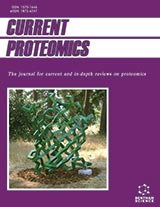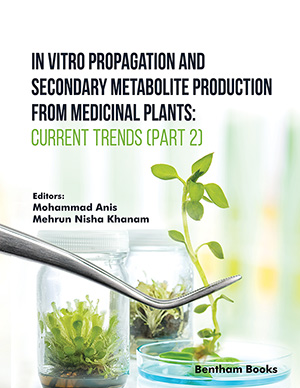Abstract
Background: Dry Weight (DW) is the lowest weight after dialysis, and patients with lower weight usually have symptoms of hypotension and shock. Several clinical-based approaches have been presented to assess the dry weight of hemodialysis patients. However, these traditional methods all depend on special instruments and professional technicians.
Objective: In order to avoid this limitation, we need to find a machine-independent way to assess dry weight, therefore we collected some clinical influencing characteristic data and constructed a Machine Learning-based (ML) model to predict the dry weight of hemodialysis patients.
Methods: In this paper, 476 hemodialysis patients' demographic data, anthropometric measurements, and Bioimpedance spectroscopy (BIS) were collected. Among them, these patients' age, sex, Body Mass Index (BMI), Blood Pressure (BP) and Heart Rate (HR) and Years of Dialysis (YD) were closely related to their dry weight. All these relevant data were used to enter the regression equation. Multiple Kernel Support Vector Regression-based on Maximizes the Average Similarity (MKSVRMAS) model was proposed to predict the dry weight of hemodialysis patients.
Results: The experimental results show that dry weight is positively correlated with BMI and HR. And age, sex, systolic blood pressure, diastolic blood pressure and hemodialysis time are negatively correlated with dry weight. Moreover, the Root Mean Square Error (RMSE) of our model was 1.3817.
Conclusion: Our proposed model could serve as a viable alternative for dry weight estimation of hemodialysis patients, thus providing a new way for clinical practice.
Keywords: Dry weight, hemodialysis, machine learning, multiple kernel learning, support vector regression, blood pressure.
[http://dx.doi.org/10.1159/000167013] [PMID: 19169022]
[http://dx.doi.org/10.1007/s11255-016-1473-y] [PMID: 27943170]
[http://dx.doi.org/10.1111/sdi.12721] [PMID: 29876972]
[http://dx.doi.org/10.4103/1319-2442.202766] [PMID: 28352009]
[http://dx.doi.org/10.1007/s11255-017-1709-5] [PMID: 28975489]
[http://dx.doi.org/10.1111/j.1744-9987.2012.01136.x ] [PMID: 23379487]
[http://dx.doi.org/10.1073/pnas.1821550116] [PMID: 30755538]
[http://dx.doi.org/10.1073/pnas.1812975115] [PMID: 30355771]
[http://dx.doi.org/10.1093/bioinformatics/btz967] [PMID: 31971559]
[http://dx.doi.org/10.1159/000088279] [PMID: 16155360]
[http://dx.doi.org/10.1016/j.cmpb.2017.09.005] [PMID: 29157442]
[http://dx.doi.org/10.1038/nature21056] [PMID: 28117445]
[http://dx.doi.org/10.1504/IJDMB.2013.056078] [PMID: 24417022]
[http://dx.doi.org/10.1371/journal.pone.0011794] [PMID: 20668688]
[http://dx.doi.org/10.1186/1471-2164-9-S2-S22] [PMID: 18831788]
[http://dx.doi.org/10.1155/2015/861402] [PMID: 26425556]
[http://dx.doi.org/10.2174/157016461302160514004105]
[http://dx.doi.org/10.1021/acs.jcim.7b00307] [PMID: 29125297]
[http://dx.doi.org/10.1186/s12864-018-5273-x] [PMID: 30598109]
[http://dx.doi.org/10.1093/bioinformatics/bty112] [PMID: 29490018]
[http://dx.doi.org/10.1109/TNB.2019.2922214] [PMID: 31199265]
[http://dx.doi.org/10.1093/bioinformatics/bty039] [PMID: 29420699]
[http://dx.doi.org/10.1093/bioinformatics/bty824] [PMID: 30239627]
[http://dx.doi.org/10.1261/rna.069112.118] [PMID: 30425123]
[http://dx.doi.org/10.1016/j.jpdc.2017.08.009]
[http://dx.doi.org/10.1109/TCBB.2019.2954826] [PMID: 31751248]
[http://dx.doi.org/10.1109/TCBB.2019.2912173] [PMID: 31027046]
[http://dx.doi.org/10.1093/bib/bbz106] [PMID: 31697319]
[http://dx.doi.org/10.1093/bib/bby104] [PMID: 30403770]
[http://dx.doi.org/10.3389/fmicb.2019.00827] [PMID: 31057526]
[http://dx.doi.org/10.1021/acs.jproteome.9b00250] [PMID: 31136183]
[http://dx.doi.org/10.1007/s00521-019-04569-z]
[http://dx.doi.org/10.1016/j.ins.2017.08.045]
[http://dx.doi.org/10.1109/JBHI.2018.2883834] [PMID: 30507518]
[http://dx.doi.org/10.1016/j.neucom.2018.10.028]
[http://dx.doi.org/10.3390/ijms17101623] [PMID: 27669239]
[http://dx.doi.org/10.1186/s12859-016-1253-9] [PMID: 27677692]
[http://dx.doi.org/10.1016/j.knosys.2019.105261]
[http://dx.doi.org/10.1093/ndt/gfp517] [PMID: 19808949]
[http://dx.doi.org/10.1038/sj.ki.5000286] [PMID: 16501488]
[http://dx.doi.org/10.1159/000362109] [PMID: 24902760]
[PMID: 12434449]
[http://dx.doi.org/10.1007/BF00994018]
[http://dx.doi.org/10.1145/1961189.1961199]
[http://dx.doi.org/10.1093/bioinformatics/btx682] [PMID: 29077792]
[PMID: 8547437]
[http://dx.doi.org/10.1159/000327334] [PMID: 21625109]
[http://dx.doi.org/10.1177/039139880703001210] [PMID: 18203072]
[http://dx.doi.org/10.1152/jappl.1995.79.4.1316] [PMID: 8567578]
[http://dx.doi.org/10.2174/1574893614666190227160538]
[http://dx.doi.org/10.2174/1574893614666190304125221]
[http://dx.doi.org/10.2174/1574893613666181031141717]






























